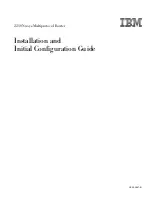
PPP over Ethernet
U
SER
G
UIDE
262
PPP
OVER
E
THERNET
On any network interface, you can activate a PPP session over Ethernet (PPPoE) to create a new PPP
interface, getting first the permission and then the IP address from a dedicated server.
The main configuration commands are as follows.
To specify the physical interface on which to send PPPoE packets:
set pppoe interface <physical-interface>
To set the user and password to use for the PPP autentizazione:
set pppoe login <login-name> password <password>
To enable or disable PAT functions for the outgoing packets of the PPP interface:
set pppoe masquerade
set pppoe no-maquerade
To enable or disable a static default route on the PPP interface
set pppoe default-route
set pppoe no-default-route
To set the value of MTU (Maximum Transmit Unit) and MRU (Maximum receie Unit) of the PPP
interface:
set pppoe mtu <val>
set pppoe mru <val>
To set the frequency by which the packets are sent
set pppoe lcp-echo-interval <n>
To set the number of attempts to be made before the shutting down the interface if it does not
respond:
set pppoe lcp-echo-failure <n>
To set the name of the concentrator:
set pppoe ac-name <name>
To specify the name of any service:
set pppoe service-name <name>
To activate the service:
set pppoe on
To disable the service:
set pppoe off
If the PPP protocol is needed on VDSL connections, then you must use activate it using:
set dsl on
set vlan add vid 835 interface vdsl0
set pppoe interface vdls0.835
















































